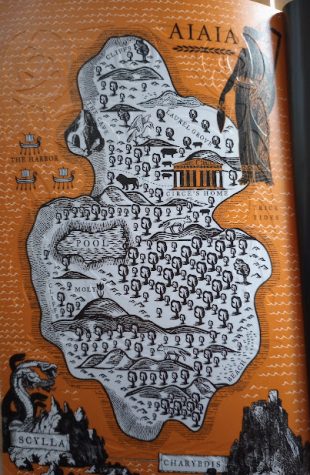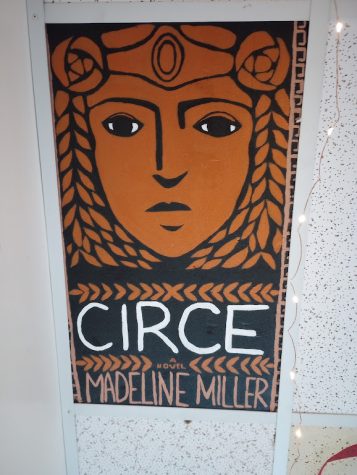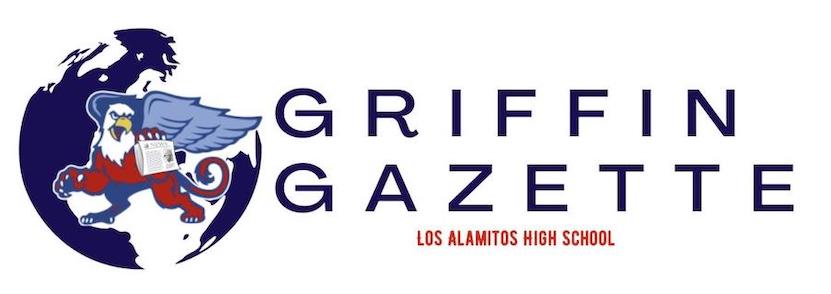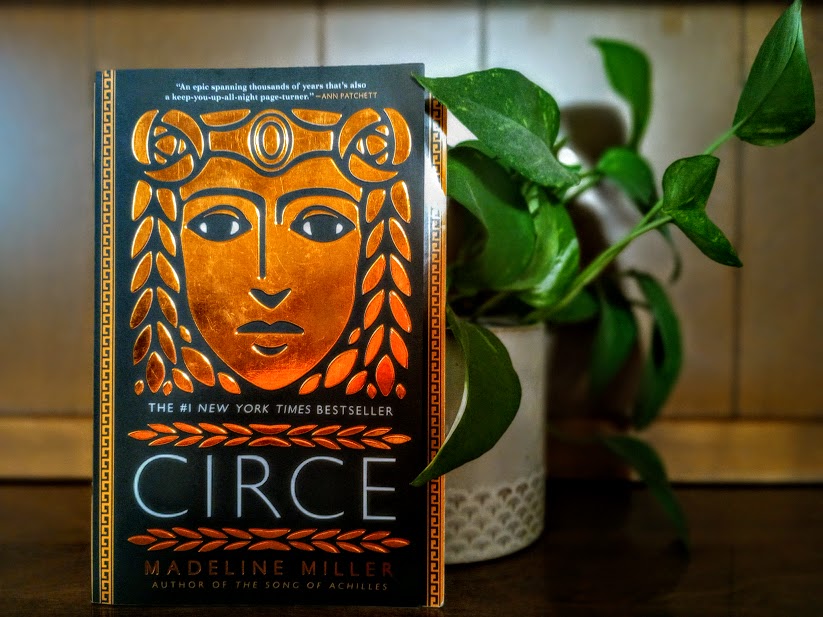“Circe” book review: A mesmerizing page turner
“Circe” is not your typical mythology book; it is a captivating and unpredictable story sure to keep you hooked.
Madeline Miller’s “Circe” ignites awe in readers from its mythology accuracy, complex characters and themes like women empowerment.
LOS ALAMITOS, CA — The novel “Circe” is a tale of action and suspense, as well as a search for purposeful meaning. The Greek mythological character, Circe, fiercely defends herself from the dangers of the gods and mortals, while discovering her true powerful self, letting her witchcraft magic thrive.
However, it is not your typical mythology book. For starters, it is in first person point of view, with the perspective of Circe herself. The author uses modern language with the old textbook-type dialogue to create an enchanting story. Additionally, the book spins a tale of women’s empowerment and feminist themes like overcoming the patriarchal status quo.
“Circe” was written by Madeline Miller and was published in 2018. Miller lived in New York City and Philadelphia, and then went to Brown University. There, she earned her Bachelor’s and Master’s degree in Classics. For fifteen years, she has taught Latin, Greek, and Shakespeare to high school students. More information about her can be found on her website.
Miller is also the author of the award-winning novel “The Song of Achilles,” published in 2011 and a New York Times Bestseller. The book follows the perspective of the Greek mythology character Patroclus, Achilles’ best friend, and his journey alongside the war hero during the Trojan War.
In “Circe”, it should be noted that this book does contain a few curse words and some vaguely detailed love scenes. Additionally, there is a scene of sexual assault. Readers should be aware of this prior to beginning.
When Circe is born, she is immediately different from the hundreds of other nymph children. She is neither powerful like her Titan father nor cunning like her nymph mother. After discovering a knack for witchcraft she never had, the Olympian king Zeus determines Circe as a threat. Circe is then banished from her father’s palace to a lonely island called Aiaia, also spelled Aeaea. Yet, the island is lush, beautiful, and rich with wildlife. But she is alone and must be so for eternity.

Circe can only wait for company to come to her. But by being alone on an island, threats lurk in her midst of both reckless men on ships and almighty gods hovering above. Soon she meets characters well-known in Greek mythology such as the Minotaur, Daedalus and Icarus, Jason and Medea, and the cunning Odysseus and his men. She falls in love, feels the bitter pain of jealousy and greed, overcomes the taunts of her inner demons, and learns of beauty in life.
In Greek mythology stories such as Homer’s “Odyssey,” the character Circe is not mentioned often. She is mentioned a few times in the “Odyssey,” which tells of when she turns Odysseus’ men into pigs. Later she advises them to not hurt the golden cows of Helios, as well as to seek the blind prophet Tiresias for his guidance. Circe is described as a witch who brews spells and casts enchantments. She is said to be the goddess of sorcery.
Sydney Forsyte, a sophomore at Los Al, has read “Circe” and enjoyed it greatly. She said that she first heard about the novel from a friend and was interested in reading it because she was fascinated by Greek mythology.
“[The book] makes you feel bad for Circe quite a bit,” Forsyte admits. “In Greek mythology, basically, her entire thing is just turning men into pigs. It’s sort of interesting how the Greek scholars vilify her, mostly because she was a woman, and they didn’t want to go deeper into her story or figure out why she ended up in that situation or why she was so [mad].”
Forsyte likes how Circe stands out from the rest as a female protagonist, rather than a male main character like Odysseus or Achilles, and how seeing her perspective in Greek stories contradicts what a stereotypical Greek mythology woman is. She recommends this book, even though there are some disturbing scenes, commenting that though the book may not be the best school read, it is a great novel to read for fun on your own time.
In Mrs. Franzen’s class, where she teaches Mythology and Modern Lit., her classroom ceiling panels are each hand-painted with the covers of famous and impactful books like “Tom Sawyer,” “Jurassic Park,” “The Life of Pi,” “Fahrenheit 451,” and many more. “Circe” is one of them. The books were not painted because of an award they received but because it touched the heart of a student who thought it deserved to be recognized.

“When I first started it, I asked the students to find a book that they felt they really connected to at some point from their junior high or high school experience, and create from there,” Mrs. Franzen said.
The books on the classroom ceiling vary from the years they were written, from Homer’s epic “Odyssey” to “East of Eden” published in 1952, to “Circe” published in 2018. Some books are for younger readers, and some are advanced for high school students. Nevertheless, each novel had an impact on a student.
Los Al students Bela Penn and Audrey Kranson both agreed that “Circe” deserved a place with the other great novels on the classroom ceiling.

“This book really made me empathize with Circe,” said Kranson. “She is flawed but also has power that she struggles to use as a woman and a parent because she is juggling protecting her child and navigating a society that constantly underestimates her.”
The fact that a Greek mythology character is actually relatable in modern times is what Penn loved about Circe being the protagonist.
“She’s meek and afraid but also powerful and optimistic,” she said. “She’s jealous, she’s spiteful, she’s a bleeding heart. She reflects the hope that the world isn’t so cruel, that there is a place and path for everyone– even if it isn’t so obvious, or terrible things must precede it. She reflects reality in the most comforting way.”
Both recommend this book to other students because of the novelty of having a Greek mythology woman as the main character.
“The book as a unit itself is very easy to understand; however, the significance would be lost if the reader was completely unfamiliar with Odysseus and his story,” Kranson comments.
“Circe” is a lovable novel with both suspense and life morals. It is a tale of female empowerment and motherhood, as well as one of heroic deeds and legendary conflict.
“It’s definitely an impactful novel,” said Penn. “It doesn’t quite hit you until you really think about how far Circe comes by the end of the novel…Miller does an excellent job of crafting a very unique individual with a very strong personal identity and voice, that simultaneously also acts [as] a perfect mirror for each reader. There is something that can speak to each individual.”
Your donation will support the student journalists of Los Alamitos High School. Your contribution will allow us to purchase equipment and cover our annual website hosting costs.

Katie Arnoult is a junior at Los Alamitos High School, and this is her third year in journalism. She currently works as an editorial intern for Spotlight...













Bella Kim • Dec 19, 2022 at 4:43 pm
Congrats on publishing your first book review, Katie! You did a great job painting a picture of the story without spoiling. This book is definitely moving up on my to-read list. I love the humor and personality in the quotes and the cool pictures. I also like that you included Mrs. Franzen awesome book-tiled ceiling!